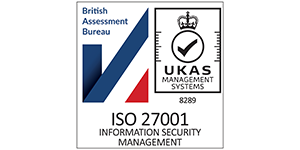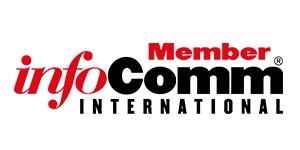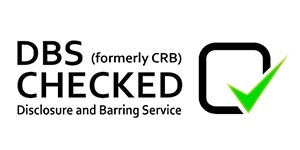What Is a Blended Learning Environment?
A blended learning environment strategically combines traditional face-to-face instruction with digital learning activities, creating a cohesive educational experience that leverages the strengths of both approaches. This educational model represents more than simply adding online components to classroom activities—it involves careful design that integrates physical and virtual learning spaces into a unified ecosystem.
For IT managers, educational technology coordinators, and academic leaders, creating effective blended environments requires understanding how different technologies support various learning modalities and how to create seamless transitions between them. The goal is to provide flexible, accessible learning opportunities that accommodate diverse learner needs and preferences.
Technology plays a central role in enabling blended learning environments, with systems like video conferencing, learning management platforms, and collaborative tools creating bridges between physical and digital spaces. Microsoft Teams Rooms and similar solutions allow remote participants to engage fully with in-person activities, while digital content repositories ensure materials are accessible regardless of location.
Blended vs Hybrid Learning: Understanding the Difference
Blended Learning
Combines online and in-person instruction, allowing students some control over time, place, path, or pace. Students might complete online modules before attending in-person sessions for discussion and application.
Hybrid Learning
Involves some students attending in-person while others join remotely simultaneously. Both groups use the same technology tools but participate in different ways based on their location.
Key Characteristics of Effective Blended Learning
- Seamless integration between physical and digital learning experiences
- Technology creates bridges between different participation modes
- Effective design makes technology nearly invisible to users
- Equal engagement opportunities for all participants regardless of location
Core Components of Effective Blended Learning Spaces
Successful blended learning environments require five essential components working together seamlessly. Each component addresses specific needs and challenges in creating effective hybrid learning experiences.
Reliable Internet Infrastructure
Robust Wi-Fi, network security, and adequate bandwidth form the invisible backbone of blended learning. Without reliable infrastructure, even the most advanced AV systems will fail to deliver value.
Requirements:
- • Minimum 100Mbps for primary schools, 1Gbps for secondary schools (DfE standards)
- • Quality of Service (QoS) policies for video collaboration
- • Redundant connections for critical systems
- • Adequate coverage throughout all learning spaces
Appropriate AV Equipment
High-quality cameras, microphones, displays, and audio systems ensure both in-person and remote participants can see, hear, and contribute to discussions equally. Professional audio systems are particularly critical for ensuring clear communication.
Essential Equipment:
- • PTZ cameras for tracking speakers and showing room views
- • Ceiling microphone arrays or wireless microphones
- • Large displays or interactive whiteboards
- • Confidence monitors for presenters
- • Audio processing for echo cancellation and noise reduction
Learning Management System (LMS)
A robust LMS platform provides the digital foundation for content delivery, assignment management, and student engagement tracking. Integration with video conferencing and collaboration tools creates a seamless experience.
Key Features:
- • Content repository and distribution
- • Assignment submission and grading
- • Discussion forums and collaboration spaces
- • Integration with video conferencing platforms
- • Analytics and progress tracking
Teacher Training and Support
Comprehensive professional development ensures staff feel confident and competent using new tools. Training should cover technical proficiency, pedagogical strategies, and classroom management techniques for hybrid environments.
Training Components:
- • Hands-on technical training with specific hardware and software
- • Pedagogical strategies for blended instruction
- • Classroom management for hybrid environments
- • Ongoing support and peer learning opportunities
Flexible Classroom Furniture and Layout
Physical spaces must support both collaborative activities and individual work, with flexible furniture arrangements and multiple technology access points. The layout should enable quick reconfiguration for different learning activities.
Design Considerations:
- • Movable furniture for flexible configurations
- • Multiple display options for different viewing angles
- • Varied seating options (desks, tables, collaborative spaces)
- • Proper acoustics and lighting for video quality
- • Accessible design for all users
5-Step Blended Learning Environment Setup Process
Follow this proven step-by-step process to plan, implement, and optimize your blended learning environment. This structured approach reduces overwhelm and ensures nothing is overlooked.
Assess Current Technology Infrastructure
Begin by evaluating your existing technology assets, network capacity, and physical spaces. Identify what's working, what needs upgrading, and what gaps exist. This assessment informs all subsequent decisions.
Assessment Checklist:
- • Audit current AV equipment and software
- • Test network bandwidth and Wi-Fi coverage
- • Evaluate physical space constraints and opportunities
- • Review existing LMS capabilities and limitations
- • Assess teacher technology comfort levels
Timeline: 2-3 weeks
Plan Physical Space Layout and Equipment Placement
Design your room layout to support both in-person and remote participants. Consider camera angles, microphone coverage, display visibility, and furniture arrangements that enable flexible learning activities.
Planning Considerations:
- • Optimal camera placement for room views and speaker tracking
- • Microphone coverage for all seating areas
- • Display positioning for in-person and remote viewing
- • Furniture arrangement for collaboration and individual work
- • Power and cable management solutions
Timeline: 1-2 weeks
Select and Procure Hardware and Software
Choose equipment and platforms that address your specific needs, budget constraints, and integration requirements. Prioritise reliability, ease of use, and compatibility with existing systems.
Selection Criteria:
- • Compatibility with existing infrastructure
- • Ease of use for teachers and students
- • Scalability for future expansion
- • Support and warranty options
- • Total cost of ownership (not just purchase price)
Timeline: 3-6 weeks
Install Equipment and Configure Systems
Professional installation ensures optimal performance and reduces technical issues. Configure all systems, test integrations, and establish baseline settings before training begins.
Installation Steps:
- • Mount displays and cameras in optimal positions
- • Install and configure audio systems
- • Set up network connections and test bandwidth
- • Configure software platforms and integrations
- • Test all systems with real-world scenarios
Timeline: 1-2 weeks
Train Teachers and Optimize Through Testing
Comprehensive training programs ensure successful adoption. Start with pilot groups, gather feedback, refine processes, and gradually expand. Ongoing optimization ensures continued success.
Training and Optimization:
- • Role-specific training sessions for different user groups
- • Pilot testing with select teachers and classes
- • Gather feedback and identify improvement opportunities
- • Refine processes and provide additional support
- • Gradual rollout with ongoing optimization
Timeline: 4-8 weeks (ongoing)
Common Implementation Challenges and Solutions
Anticipating common obstacles helps you prepare solutions in advance. Here are the most frequent challenges schools face and proven strategies to overcome them.
Challenge: Underestimating Bandwidth Requirements
Video conferencing and content streaming require significant bandwidth. Insufficient capacity leads to poor quality, dropped connections, and frustrated users.
Solution:
- • Conduct thorough bandwidth testing before implementation
- • Plan for 20-30% overhead beyond calculated needs
- • Implement Quality of Service (QoS) policies
- • Consider dedicated network segments for video traffic
- • Upgrade infrastructure proactively rather than reactively
Challenge: Choosing Technology Without Teacher Input
Technology selected without educator involvement often fails to meet actual classroom needs, leading to low adoption rates and wasted investment.
Solution:
- • Include teachers in the selection process from the beginning
- • Conduct pilot testing with actual classroom scenarios
- • Gather feedback on ease of use and practical functionality
- • Prioritise solutions that solve real classroom problems
- • Provide opportunities for hands-on evaluation before purchase
Challenge: Skipping Pilot Testing
Pressure to deploy quickly leads to skipping small-scale testing phases, resulting in widespread issues that could have been prevented.
Solution:
- • Always conduct pilot deployments with diverse user groups
- • Test in real classroom conditions, not just lab environments
- • Gather comprehensive feedback before full rollout
- • Iterate and refine based on pilot results
- • Use pilot success stories to build momentum
Challenge: Inadequate Training Budgets
Insufficient investment in professional development leads to low confidence, poor adoption, and underutilised technology.
Solution:
- • Allocate 15-20% of project budget to training
- • Provide differentiated training for different skill levels
- • Offer ongoing support beyond initial training sessions
- • Create peer learning networks and super-user programs
- • Recognise and reward innovative technology use
Challenge: Failing to Establish Clear Usage Policies
Without clear guidelines, technology use becomes inconsistent, leading to confusion, support issues, and missed opportunities.
Solution:
- • Develop comprehensive usage policies before rollout
- • Cover recording, privacy, accessibility, and acceptable use
- • Communicate policies clearly to all stakeholders
- • Review and update policies regularly
- • Provide examples and scenarios for clarity
Best Practices for Sustainable Integration
Long-term success requires practices that ensure continued effectiveness and value. These proven strategies help maintain and optimize blended learning environments over time.
Start Small, Scale Gradually
Begin with pilot classrooms or departments before full-scale rollout. This approach allows you to learn, refine, and build confidence while minimising risk.
- •Select 2-3 pilot classrooms representing different use cases
- •Gather comprehensive feedback and identify improvements
- •Refine processes before expanding to additional spaces
- •Use pilot success stories to build momentum
Prioritise User Experience
Technology should enhance rather than complicate the learning experience. Choose solutions that are intuitive, reliable, and solve real problems.
- •Select equipment with simple, intuitive interfaces
- •Ensure one-touch or minimal-step operation
- •Provide clear visual indicators and feedback
- •Test usability with actual teachers before purchase
Establish Ongoing Support Systems
Support shouldn't end after initial training. Create structures for ongoing assistance, troubleshooting, and continuous improvement.
- •Create a helpdesk or support ticketing system
- •Develop a knowledge base with common solutions
- •Establish super-user networks for peer support
- •Schedule regular check-ins and refresher training
Monitor and Optimize Continuously
Regular assessment and optimization ensure technology continues to meet evolving needs and deliver value.
- •Track usage statistics and engagement metrics
- •Gather regular feedback from teachers and students
- •Identify underutilised features or equipment
- •Make data-driven improvements based on evidence
Technology Tools and Equipment Recommendations
Selecting the right equipment is critical for success. Here's a comparison of technology options across different budget levels and use cases to help inform your decisions.
| Equipment Type | Essential Features | Budget Range | Best For |
|---|---|---|---|
| Interactive Displays | Touch capability, 4K resolution, built-in soundbar, wireless connectivity | £2,000 - £8,000 | Standard classrooms, collaborative spaces |
| PTZ Cameras | Auto-tracking, wide-angle views, remote control, 4K capability | £800 - £3,000 | Lecture theatres, large classrooms |
| Microphone Systems | Ceiling arrays or wireless, noise cancellation, echo reduction | £500 - £2,500 | All hybrid learning spaces |
| Video Conferencing Systems | All-in-one solutions, platform integration, one-touch join | £1,500 - £5,000 | Meeting rooms, smaller classrooms |
| Audio Systems | Ceiling speakers, voice reinforcement, audio processing | £800 - £3,000 | Large spaces, lecture theatres |
| Control Systems | Touch panels, unified control, scheduling integration | £500 - £2,000 | All spaces requiring simplified operation |
Basic Setup
£5,000 - £10,000
Per classroom
- • Interactive display
- • Basic camera and microphone
- • Video conferencing software
- • Basic audio system
Standard Setup
£10,000 - £20,000
Per classroom
- • Premium interactive display
- • PTZ camera with tracking
- • Professional microphone array
- • Integrated video platform
- • Control system
Premium Setup
£20,000+
Per classroom
- • Large format displays/video walls
- • Multiple cameras and angles
- • Advanced audio processing
- • Full room automation
- • Lecture capture integration
Measuring Success and ROI
Demonstrating value requires clear metrics and measurement frameworks. Track these key indicators to assess effectiveness and justify continued investment.
Quantitative Metrics
- •Student Engagement: Participation rates, attendance, interaction frequency
- •Academic Performance: Assessment scores, completion rates, learning outcomes
- •Technology Usage: Frequency of use, feature adoption, platform activity
- •Technical Reliability: Uptime, incident frequency, resolution times
Qualitative Metrics
- •Teacher Satisfaction: Confidence levels, ease of use, perceived value
- •Student Experience: Feedback surveys, engagement observations, accessibility
- •Administrative Efficiency: Time savings, process improvements, resource utilisation
- •Innovation Indicators: Creative uses, peer learning, knowledge sharing
ROI Calculation Framework
Calculate return on investment by comparing total cost of ownership against measurable benefits:
Costs to Consider:
- • Initial hardware and software purchase
- • Installation and integration services
- • Training and professional development
- • Ongoing maintenance and support
- • Licences and subscriptions
Benefits to Measure:
- • Time savings (administrative and teaching)
- • Improved student outcomes
- • Reduced support overhead
- • Increased space utilisation
- • Enhanced accessibility and inclusion
Tip: Establish baseline metrics before implementation, then measure at 3, 6, and 12-month intervals to track progress and demonstrate value over time.

















